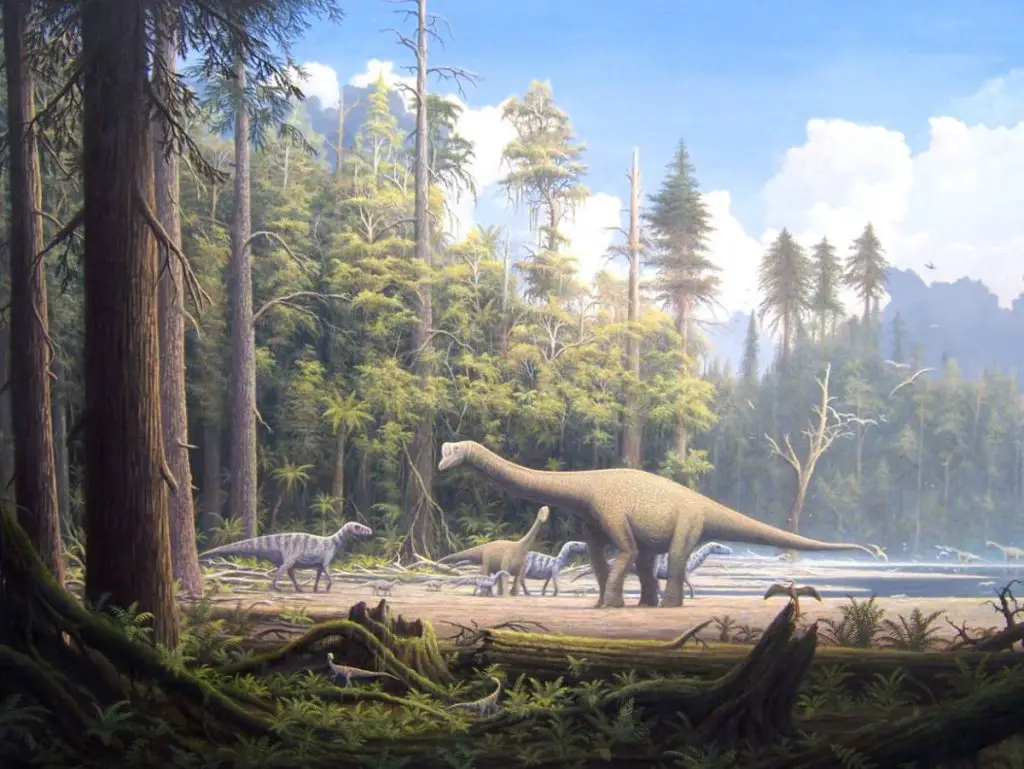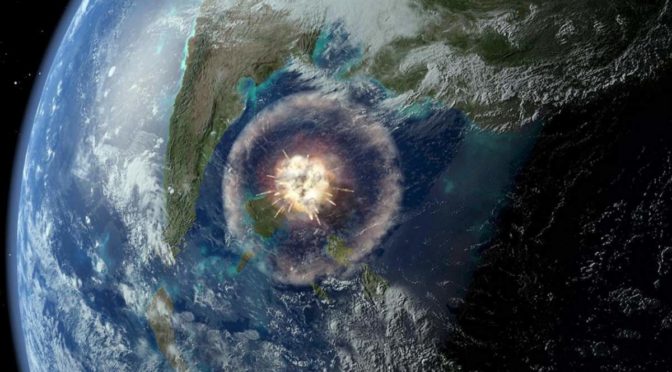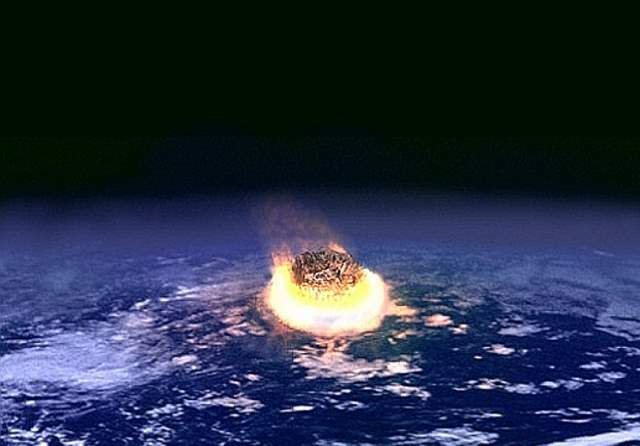Around 66 million years ago, an asteroid or comet at least 10 kilometers (6 miles) in diameter impacted a few miles from the present-day town of Chicxulub in Mexico (hence it is dubbed as the “Chicxulub impactor”, the “dinosaur-killer”), at around 64,000 kilometers per hour (40,000 mph). The impact has created a crater (Chicxulub crater) more than 180 km (110 miles) in diameter. But, what’s more, the energy of the impact (which is equivalent of about ten billion Hiroshima atom bombs) vaporized the rock which was rich in sulfur compounds, filling the air with a thick cloud of dust, similar to that created by a catastrophic volcanic eruption.
This cloud blocked out the sun at least for a decade and caused a global, dark winter: even in the tropics the temperatures were barely above freezing, and the average global temperature was below 0°C (32°F). Before the impact, the average global temperature was around 26°C (47°F), so this means a huge drop.
And the recovery time was more than 30 years! The dinosaurs which had dominated the Earth for more than 150 million years were used to living in a lush climate and were already in decline, so non-avian dinosaurs couldn’t survive after the last deadly blow.


But, according to a new study published in the journal Science, this global winter was followed by a very warm period that lasted around 100,000 years. The impact caused wildfires on a global scale, which unleashed so much heat-trapping carbon dioxide into the atmosphere so quickly. Across all of Earth’s history, the increased rate of the level of carbon dioxide in the atmosphere seems to be rivaled only by recent carbon pollution from factories, cars, planes, and modern industry.
Global warming triggered by the dinosaur-killer asteroid
The result was: global warming. The Earth’s average temperature was elevated by 5 °C and it took roughly 100,000 years for the climate to return to normal.
Researchers analyzed the teeth, scales, and bones of fish (which are almost sand-grain sized) that lived in modern-day Tunisia before, during, and after the impact. They found that during this time the amount of Oxygen-16 (16O), a stable isotope of oxygen, increased relatively in these hard tissues.
This would signal a temperature increase: while fish grow, during the formation of the teeth or bone, oxygen removed from water goes into the hard tissue. Oxygen-18 (18O), the natural, stable isotope of oxygen is heavier than Oxygen-16, so it is more likely to enter the new bone. For every 5 °C of temperature increase, there’s one atom of oxygen-18 that stays in the water rather than go into a mineral.
By measuring the ratio of Oxygen-16 to Oxygen-18 in a tissue, researchers can say can detect the amount of temperature change, even millions of years after the death of an animal.
And that’s what the researchers found: after the global, dark winter that killed off most plants and animals (including non-avian dinosaurs), the skies cleared, and the planet must have warmed up about 5 degrees Celsius because all of those fires and zapped minerals put lots of carbon dioxide in the atmosphere. This very warm period persisted for roughly 100,000 years.
Sources
- Study: “Postimpact earliest Paleogene warming shown by fish debris oxygen isotopes (El Kef, Tunisia)”. K. G. MacLeod Notes 1, 2, P. C. Quinton Notes 3, J. Sepúlveda Notes 4, M. H. Negra Notes 5. Published on May 24, 2018, on Science.
- “That Dinosaur-Killing Asteroid? It Triggered Global Warming, Too” on The Atlantic
- “Asteroid That Killed The Dinosaurs Caused Global Warming For The Next 100,000 Years” on Tech Times
- “Asteroid Impact That Wiped Out The Dinosaurs Also Caused Abrupt Global Warming” on NPR.org
- “The Asteroid That Smote the Dinosaurs Burned the Birds Out of Trees” on The Atlantic
- Chicxulub impactor on Wikipedia
Notes
- Corresponding author.
- Department of Geological Sciences, University of Missouri, Columbia, MO, USA.
- Department of Geology, SUNY Potsdam, Potsdam, NY, USA.
- Department of Geological Sciences and Institute of Arctic and Alpine Research, University of Colorado Boulder, Boulder, CO, USA.
- Department of Geology, Faculty of Sciences of Tunis, University of Tunis El Manar, 2092 Manar II, Tunis, Tunisia.
- The Largest Elephant Ever Recorded : Henry - October 13, 2024
- All Moons in Our Solar System [2024 Update] - September 17, 2024
- Budget of NASA, Year by Year [1980-1989] - June 10, 2024


